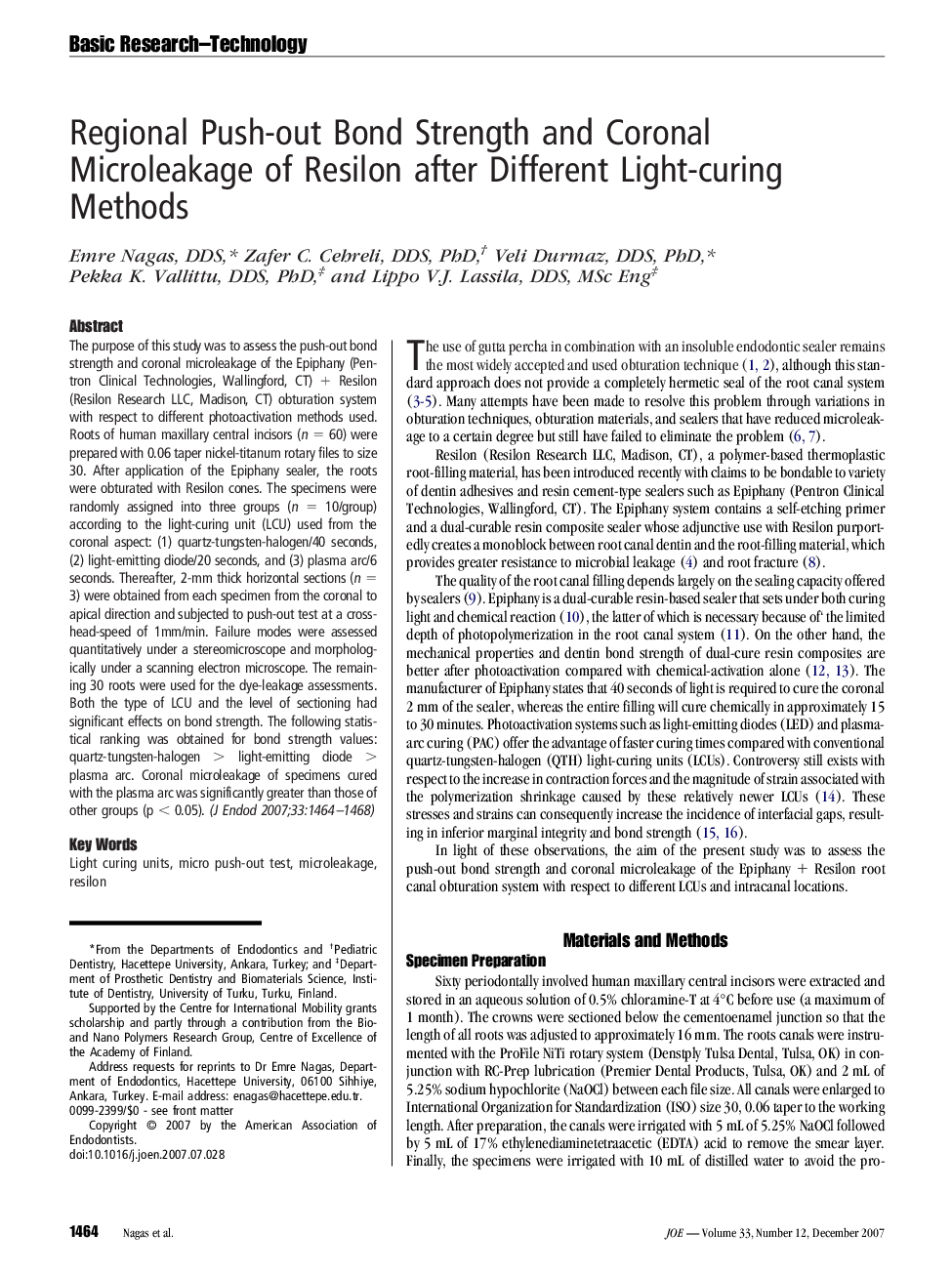| Article ID | Journal | Published Year | Pages | File Type |
|---|---|---|---|---|
| 3149748 | Journal of Endodontics | 2007 | 5 Pages |
Abstract
The purpose of this study was to assess the push-out bond strength and coronal microleakage of the Epiphany (Pentron Clinical Technologies, Wallingford, CT) + Resilon (Resilon Research LLC, Madison, CT) obturation system with respect to different photoactivation methods used. Roots of human maxillary central incisors (n = 60) were prepared with 0.06 taper nickel-titanum rotary files to size 30. After application of the Epiphany sealer, the roots were obturated with Resilon cones. The specimens were randomly assigned into three groups (n = 10/group) according to the light-curing unit (LCU) used from the coronal aspect: (1) quartz-tungsten-halogen/40 seconds, (2) light-emitting diode/20 seconds, and (3) plasma arc/6 seconds. Thereafter, 2-mm thick horizontal sections (n = 3) were obtained from each specimen from the coronal to apical direction and subjected to push-out test at a crosshead-speed of 1mm/min. Failure modes were assessed quantitatively under a stereomicroscope and morphologically under a scanning electron microscope. The remaining 30 roots were used for the dye-leakage assessments. Both the type of LCU and the level of sectioning had significant effects on bond strength. The following statistical ranking was obtained for bond strength values: quartz-tungsten-halogen > light-emitting diode > plasma arc. Coronal microleakage of specimens cured with the plasma arc was significantly greater than those of other groups (p < 0.05).
Related Topics
Health Sciences
Medicine and Dentistry
Dentistry, Oral Surgery and Medicine
Authors
Emre DDS, Zafer C. DDS, PhD, Veli DDS, PhD, Pekka K. DDS, PhD, Lippo V.J. DDS, MSc Eng,
